Created by Unknown | ||
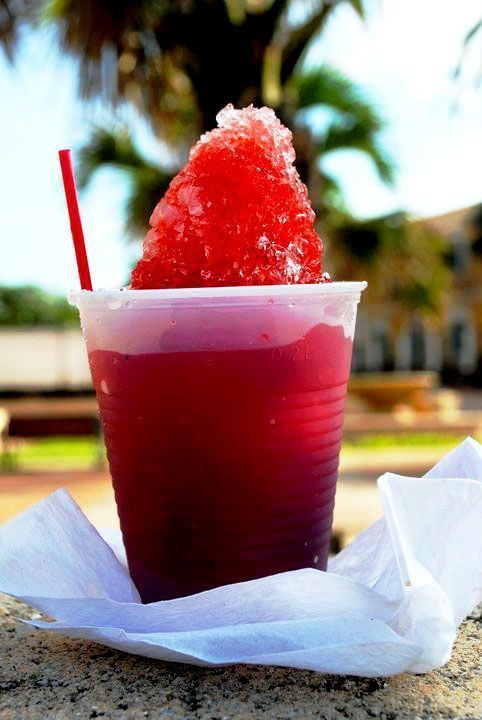 | ||
Main ingredients Water, fruit flavored syrups Similar Alcapurria, Bacalaíto, Pasteles, Mofongo, Tembleque | ||
A Piragua /pɪˈrɑːɡwə/ is a Puerto Rican shaved ice dessert, shaped like a pyramid, consisting of shaved ice and covered with fruit flavored syrup. Piraguas are sold by vendors, known as piragüeros, in small colorful pushcarts. Besides Puerto Rico, Piraguas can be found in the United States mainland areas, such as New York and Central Florida, which have large Puerto Rican communities.
Contents
- Definition
- Piragua and the pirageros
- Syrups
- Piraguas in the United States mainland
- Cultural influence
- Extra link
- References
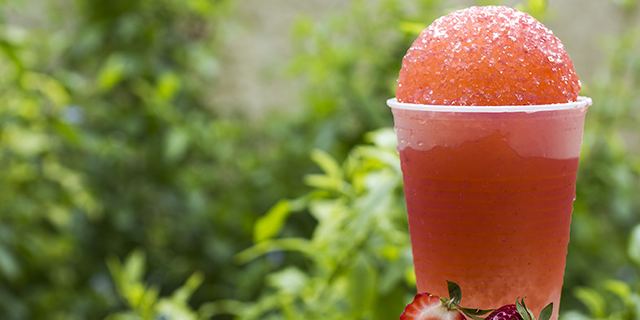
Definition
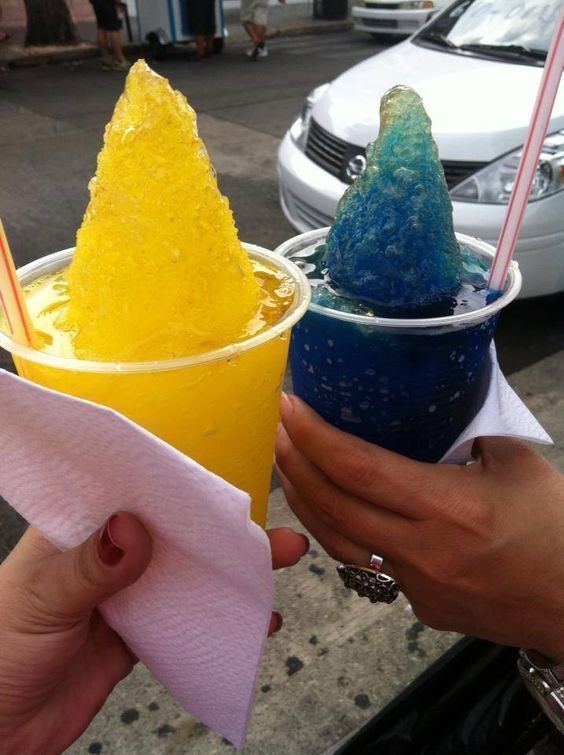
In most Spanish-speaking countries, the word piragua (pi·ra·gua) means pirogue, a small, flat-bottomed boat. In Puerto Rico the word piragua refers to a frozen treat made of shaved ice and covered with fruit flavored syrup. Unlike the American snow cone which is round and resembles a snowball, the piragua is pointy and shaped like a pyramid. The word piragua is derived from the combination of the Spanish words "pirámide" (pyramid) and "agua" (water). In Latin America, frozen treats similar to the piragua are known by many different names.
Piragua and the piragüeros

The piragua vendor is known as the "piragüero". Most piragüeros sell their product from a colorful wooden pushcart that carries an umbrella, instead of from a fixed stand or kiosk. The piragüero makes the treats from the shavings off a block of solid ice which is located inside his cart and mixtures of fruit-flavored syrups. The tropical syrup flavors vary from lemon and strawberry to passion fruit and guava. Once the syrups are ready, the piragüero will go to his place of business, which in Puerto Rico is usually close to the town plaza, while in the United States it is usually close to the public parks near Hispanic neighborhoods, to sell his product.
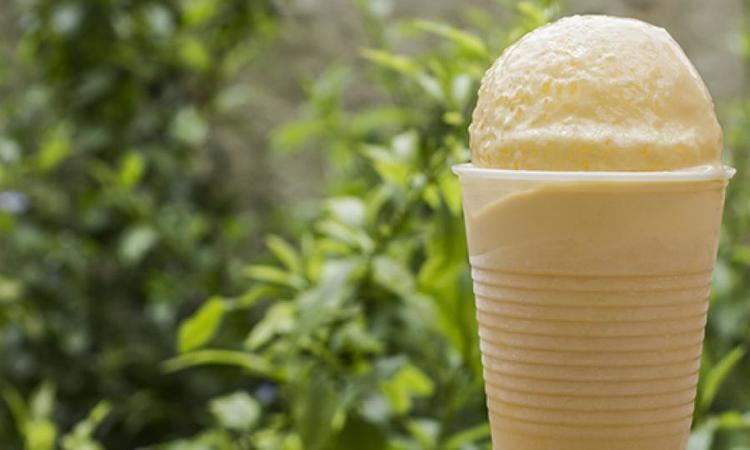
In the process of preparing a piragua, the piragüero shaves the ice from the block of ice with a Hand Ice Shaver. He then puts the shaved ice into a cup and uses a funnel shaped tool, which resembles a cone-pyramid, to give it the distinctive pyramid shape. The piragüero finishes making the piragua when he pours the desired flavored syrup. Unlike the typical American Snow cone, which is often eaten with a spoon, the piragua is eaten straight out of the cup or is sipped through a straw. Piragüeros are only out on hot sunny days because those are the only days when they can expect good business.

The word "piragua" is composed of two words: "pira" from pyramid which explains the conical pyramid shape paper cup used mostly in Puerto Rico and "agua" Spanish for water, the solid water ice that it is made from.
Syrups
The more common flavored syrups used in the "piraguas" are the following:
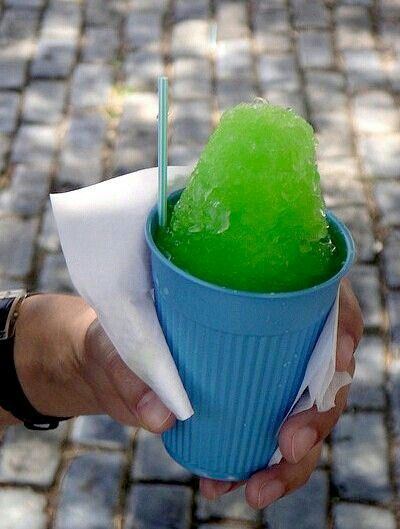
Note: Certain terms used in Puerto Rico are not common in other Spanish speaking places. Among those terms used are the flavors china, which in most other Spanish speaking locales is referred to as naranja (which in Puerto Rico refers only to the bitter orange) and melón, whose name in standard Spanish is sandía. The Puerto Rican "china" is much sweeter than the "naranja" customarily eaten or served as a juice elsewhere and which could even be more bitter in taste, whereas "melón" is an Anglicism, the word coming from the English "watermelon".
Piraguas in the United States mainland
In the 1940s, during the Puerto Rican Great Migration in which large numbers of Puerto Ricans moved to New York, they took with them their customs, traditions and their piraguas.
According to Holding Aloft the Banner of Ethiopia: by Winston James, piraguas were introduced in New York by Puerto Ricans as early as 1926. In his book, he describes the presence of piragua pushcarts during the Harlem Riots against the Puerto Rican migrants in July 1926. Author Miguel Meléndez, who moved from New York City to Chicago in the late 1950s, expresses in his book "We Took the Streets: Fighting for Latino Rights" the following:
The piragua has even been referred to in a report by the United States Environmental Protection Agency (EPA) which deals with the quality of water. The agency's reference to the piragua is in a report titled "What is in your piragua?" of August 2007, and states the following:
Piragua vending is not limited to Puerto Rico and New York. Piragüeros with their piragua pushcarts can be found in Hispanic neighborhoods in Bridgeport, Chicago, Jersey City, Miami, Newark, Philadelphia and elsewhere.
Cultural influence
The Puerto Rican piragua has been the subject of paintings and a book. The painting "Carrito de Piraguas" ("Piragua Pushcart") is a mixed media piece by an unknown artist, on exhibit at El Museo del Barrio in New York. Puerto Rican artist Iván Moura Limardo created various paintings related to the piragua. Among them are "Piragüero 5" and "Piragüero 10," which are on display in the Siena Art Gallery in San Juan. The town of Coamo commissioned the creation of a monument in the honor of the piragüeros. The statue which is called "Monumento al Piragüero" is located in the town plaza.
In the book "Luisito and the Piragua", the author tells the story of Luisito, a little Puerto Rican boy who has recently moved to the United States and misses his friends and his afternoon treat, a piragua. The happy ending is that one day, while on an errand for his mother, Luisito sees a piragüero making piraguas, and is happy to find that he can buy piraguas once more.
In the 2008 Broadway production of Lin-Manuel Miranda's musical In the Heights, there are songs entitled "Piragua" and "Piragua (Reprise)" in which a local piragüero in Washington Heights (known in the play as the Piragua Guy) sings about his life and trade. This character became the basis for a web-based reality-show parody Legally Brown: The Search for the Next Piragua Guy, which featured several well-known Broadway actors competing to take over the role.
Extra link
Piragua recipe
